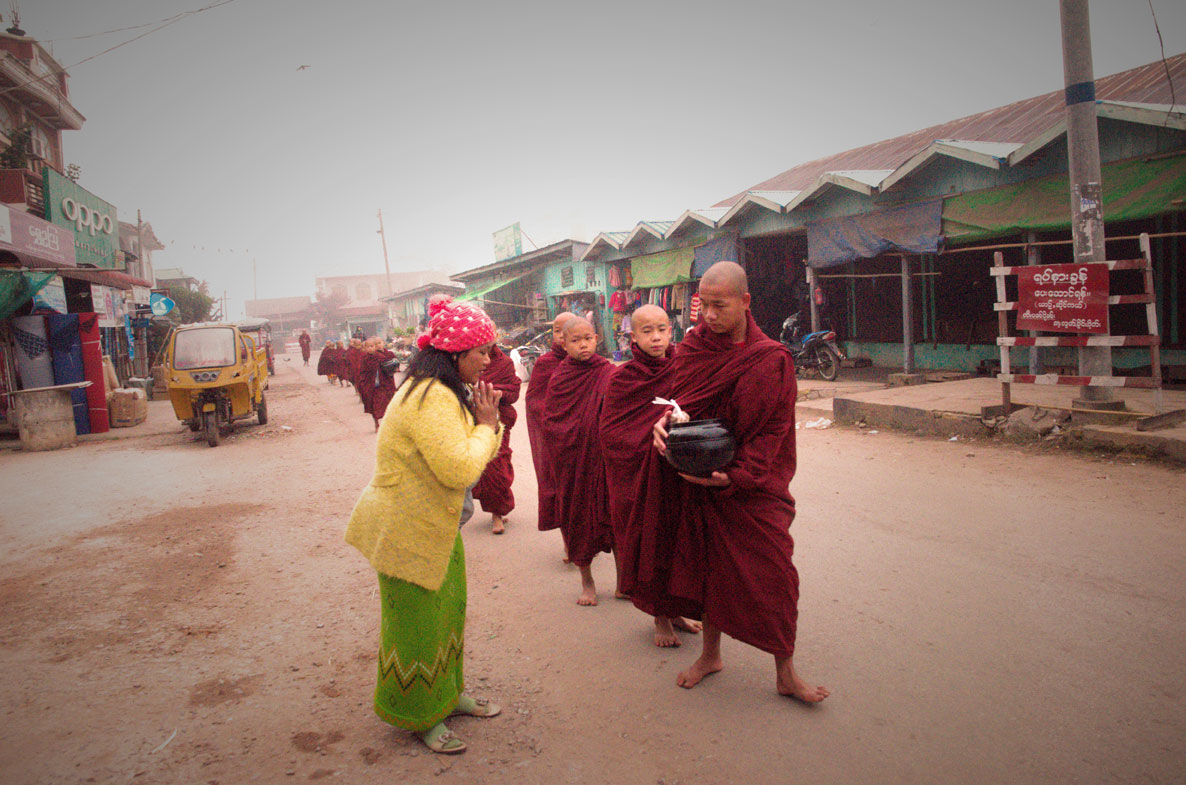Overview
Our next stop was Hsipaw (the pronunciation we used was See-Paw), a charming and laid-back town in the hills of the Shan State. Except for trekkers, Hsipaw is not on most tourist routes. We also came to trek, but I really liked this place because of its authentic feel.
For an overview on Myanmar, see https://exploringed.com/myanmar-part-1-overview-yangon/ https://exploringed.com/myanmar-part-1-overview-yangon/.
We flew from Heho to Lashio, a fifty-minute flight costing $95/person. When we landed, a high-ranking military officer was escorted from our plane by several armed soldiers. Outside the road, we saw a school and several parents in military uniforms. I mention this because it is well known that the military still runs most of the country, despite recent democratic elections. We expected to see their presence everywhere, but this was the first time we encountered it.
From the airport, we took a van to Hsipaw, arranged by our trekking company, Northern Shan State Trek (also called Firefly). After driving about an hour, we arrived at their office in Hsipaw and met Mitch our guide who briefed us on the trek starting the day after tomorrow. We changed our three-day, two-night itinerary to two-days, one-night, as we felt this would be enough trekking after our hike to Inle Lake a few days before. Finally, we arranged to go to our hotel and be picked up there the day of outing. Throughout the trek and the morning after, we were able to explore Hsipaw.
Kumundra Hill – Mountain View Hotel
In terms of character, Kumudra Hill – Mountain View Hotel was our favorite hotel in Myanmar. The owner Thomas de Van, a Frenchman who lived there and managed operations, finished building the hotel only in the last year. It is located on a high hill on the edge of the town and is a relatively short walk to the Hsipaw’s waterfall.

It provided panoramic views of the valley and nature below. It had a swimming pool, Jacuzzi on the roof and free shuttle service to the downtown area of Hsipaw.
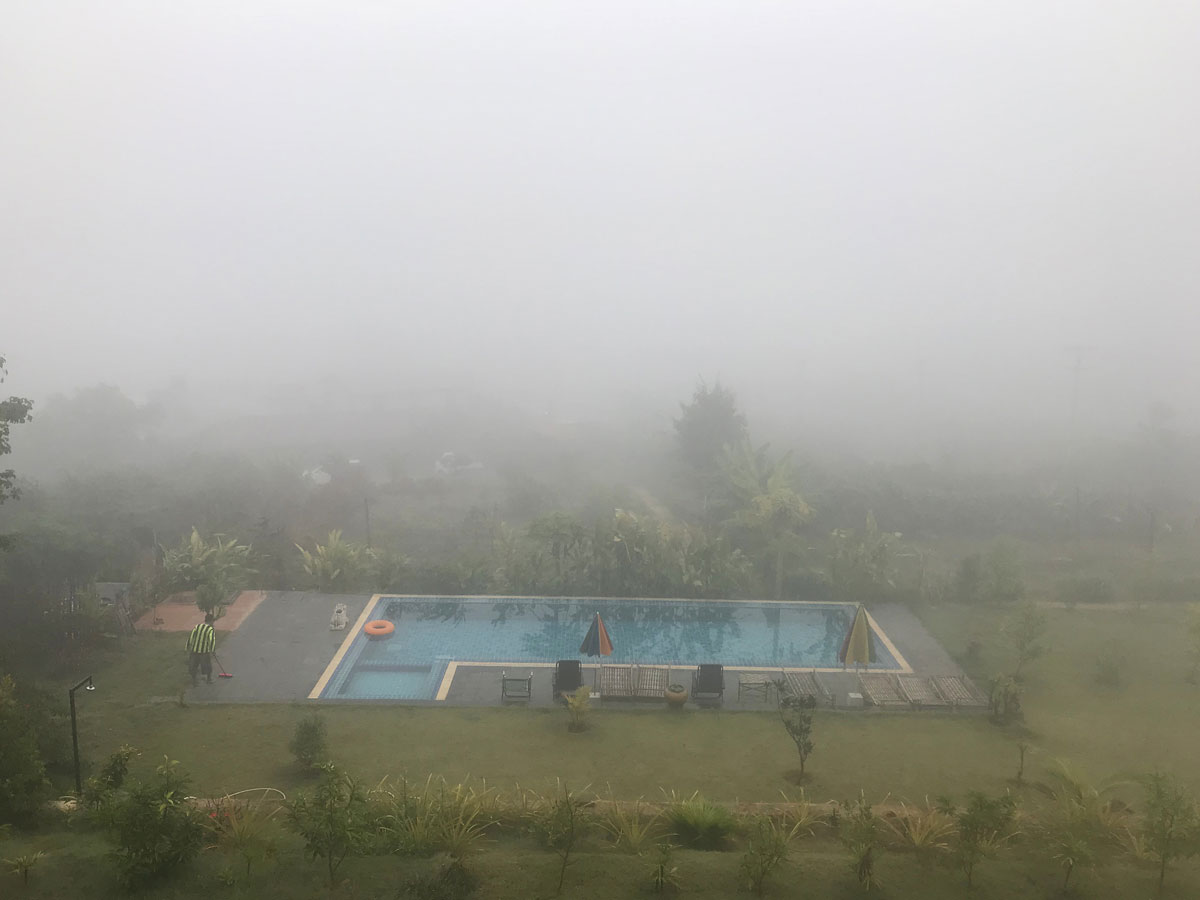
The top-floor restaurant served interesting food and the Wi-Fi was cellular based using provided SIM cards, which made it more reliable. The decorations and furniture were from, or compatible with, traditional Myanmar styles.
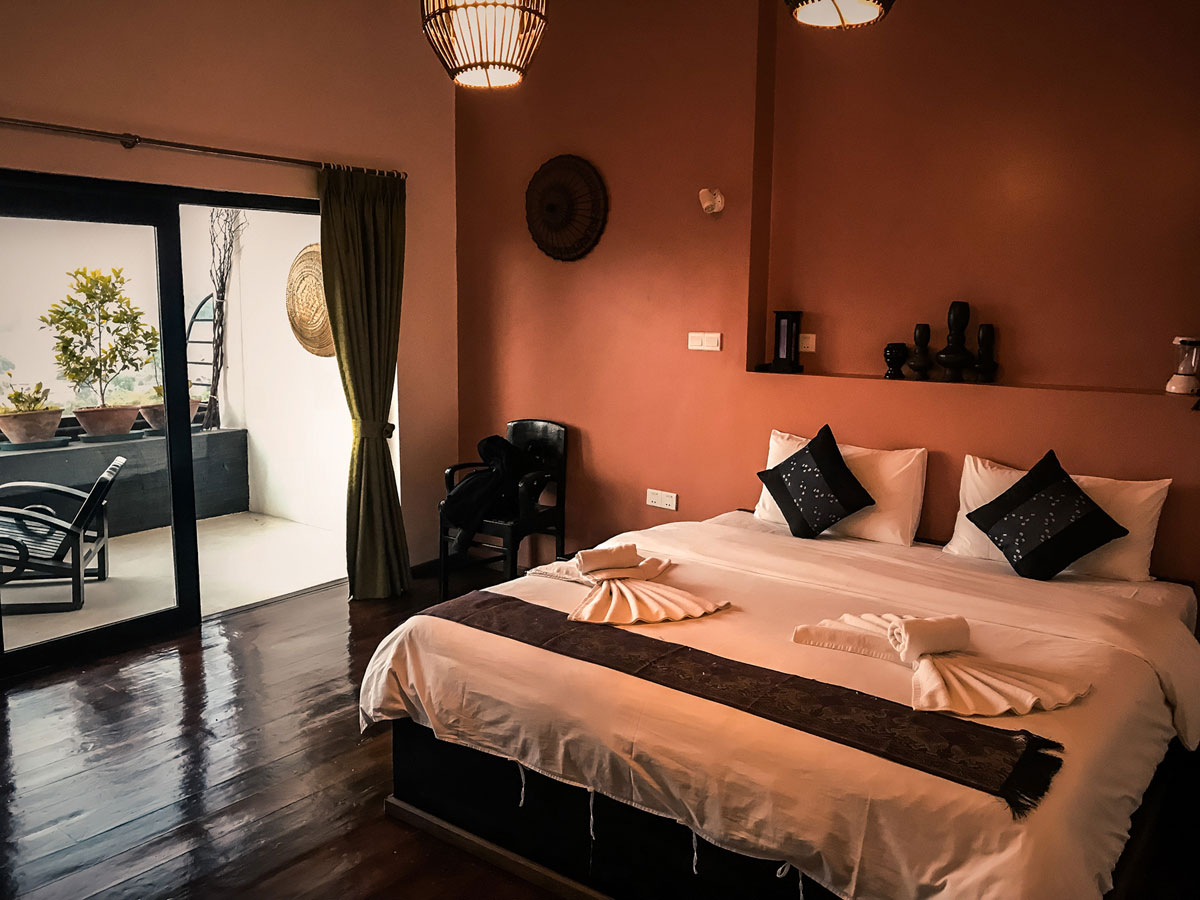
The best part about staying there was discussing the country with Thomas, who has lived in Myanmar for several years. Much of Myanmar is a mystery to first-time visitors and he provided historical context and personal experiences about how the country really functions.
Alms Walk
I went by myself, while my fellow travelers slept rather than leave before the crack of dawn, to see the Buddhist monks walk the street collecting food from homes and stores.
Each food providers volunteered for certain days and it never mattered how much or how little they had to give; the offering and community gesture was all that mattered.
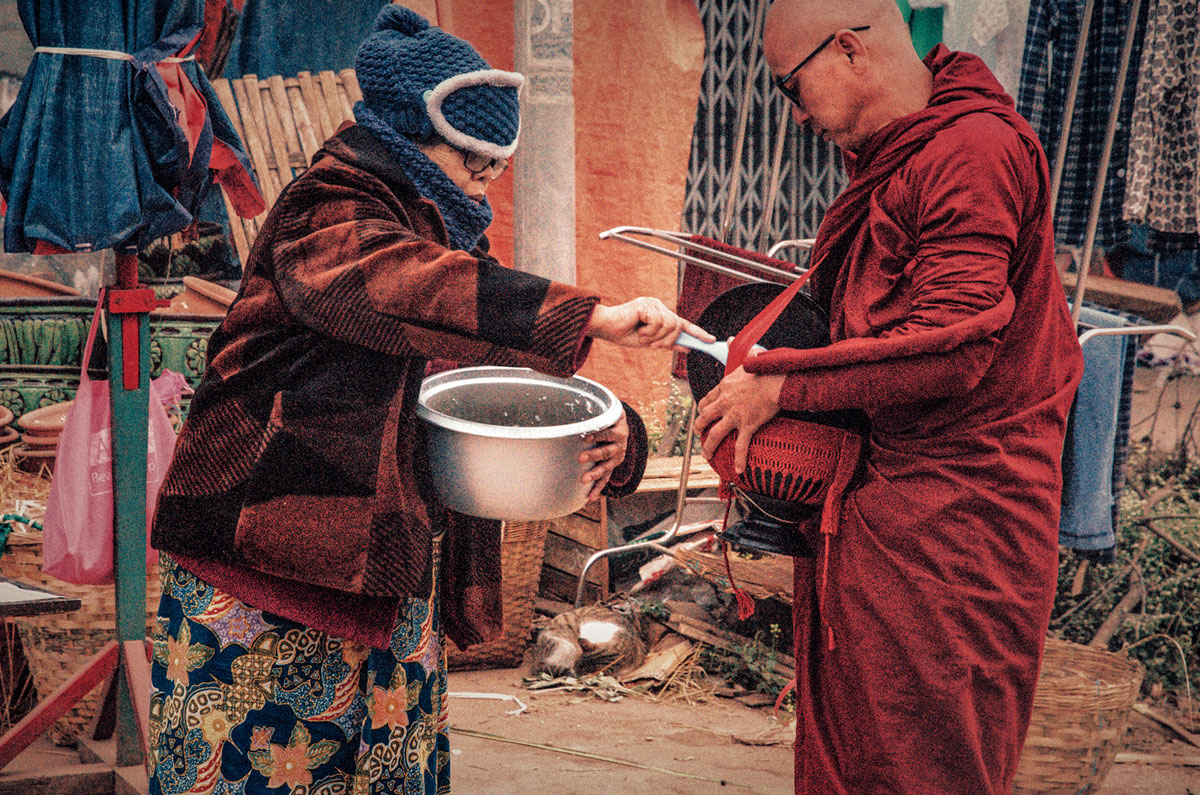
A majority of the monks were novices, from children to teenagers, who entered the Theravada Buddhism order. The walk was not leisurely, because the youth are often running between locations.
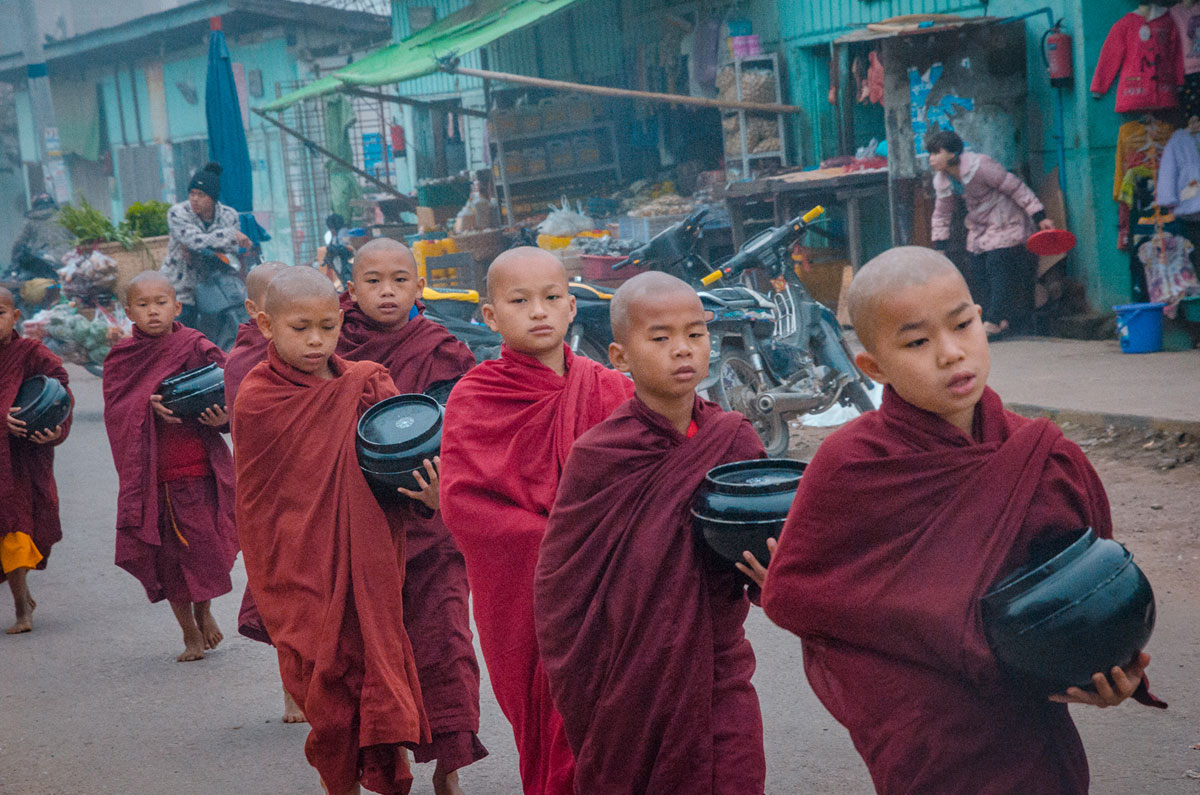
The collected food not only supplied the monks with their meal of the day, but also gave helpers, orphans, and the poor some much-needed food. It was not just male monks on the alms walk, but also nuns. However, while the monks were hatless and shoeless, the nuns wore straw pointed hats and sandals.
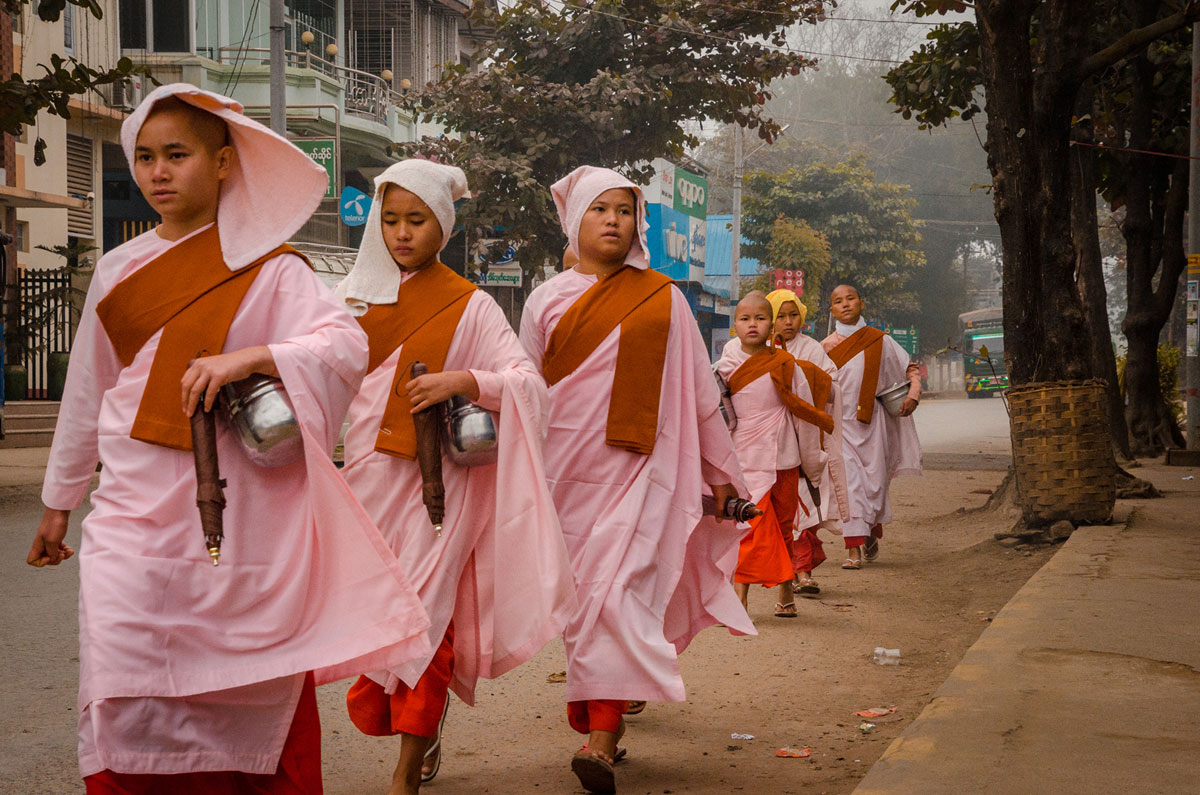
And we are not just talking a few here and there. Like the monks, they formed long lines throughout.
The alms walk, unlike some places such as Luang Prabang in Laos, was done without interference from hordes of tourists trying to take their pictures and getting in their way. I was taking pictures but, as a lone photographer, I seemed mostly welcomed for my interest and not seen as a distraction.
Hsipaw Morning Market
Amid watching the many alms walk, I strolled through the mist to the food market at about 7 am. I read that it is called the “Candlelight Market” because it starts at 3 am.
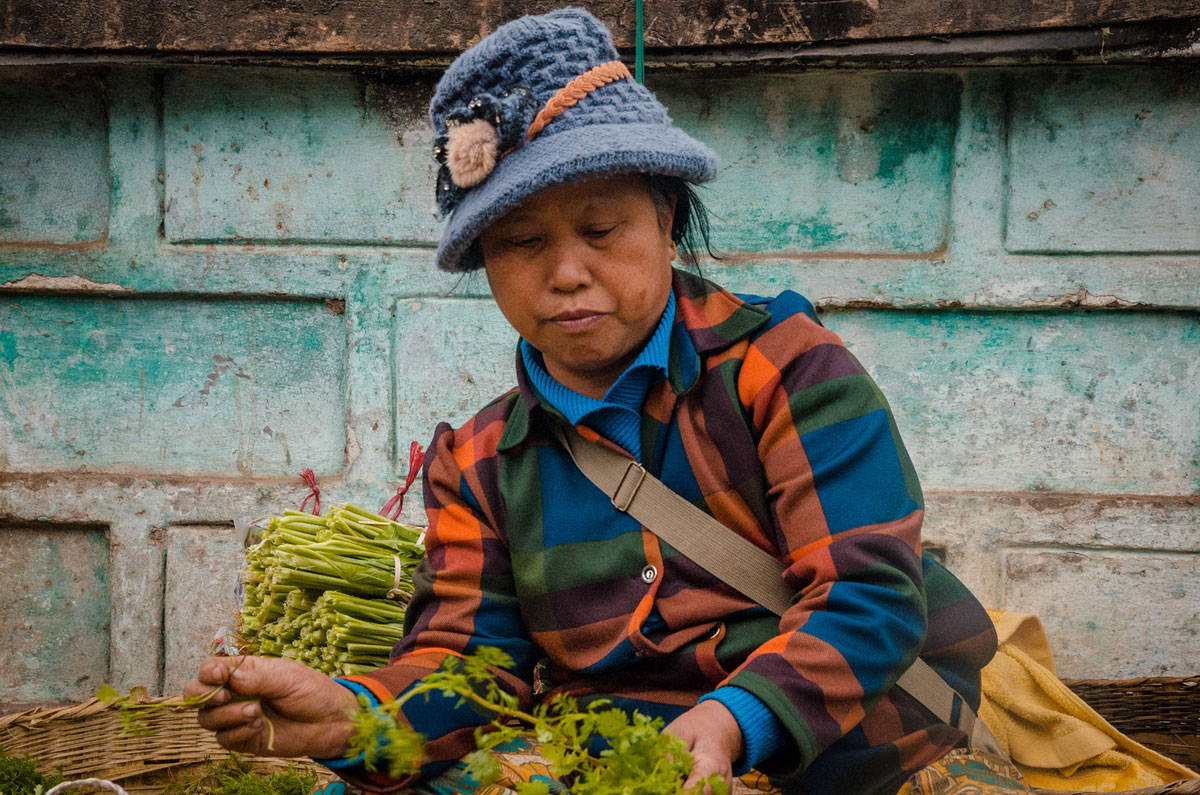
It was interesting to see how bundled up everyone was but given the climate it’s not too surprising.

Almost everything sold was food and related items. The buyers were all locals, many using their motorcycles to carry away their purchases.

While it was early morning, there were young children around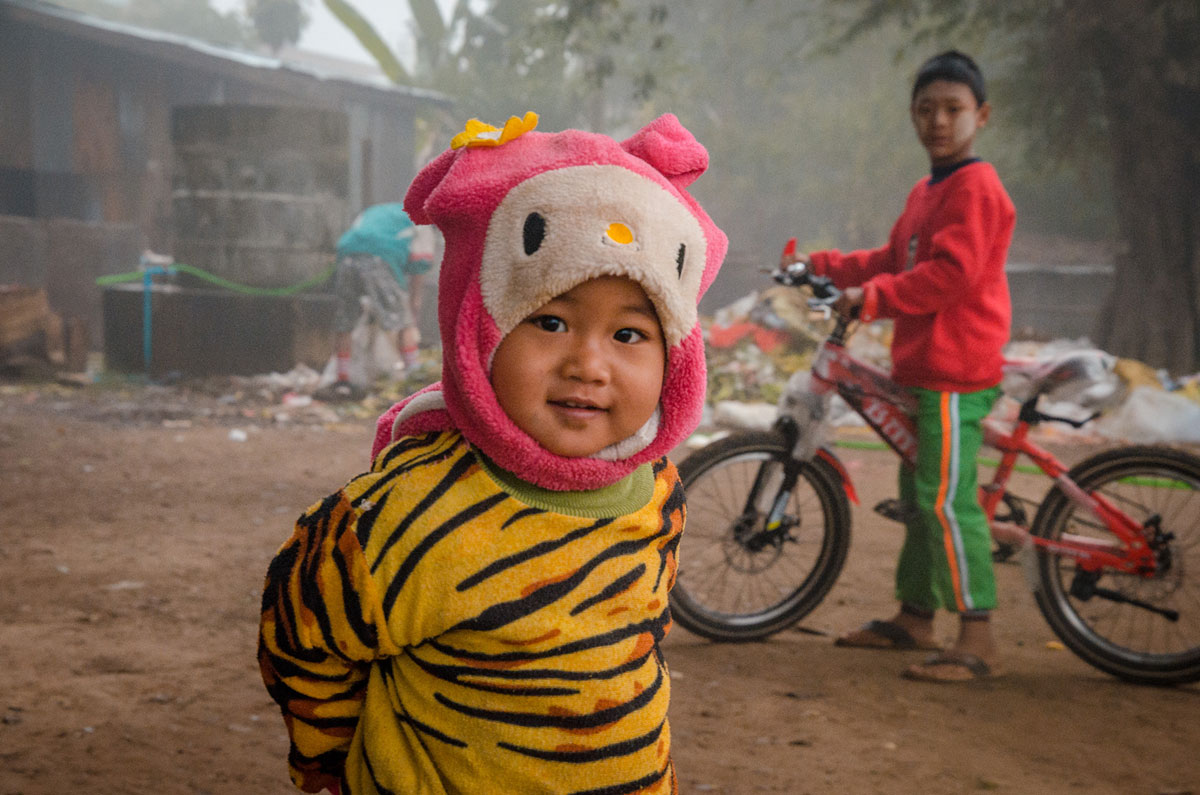
While walking by the market, I saw the residents go through their daily lives, such as,,,
– a woman carrying supplies on her motor bike
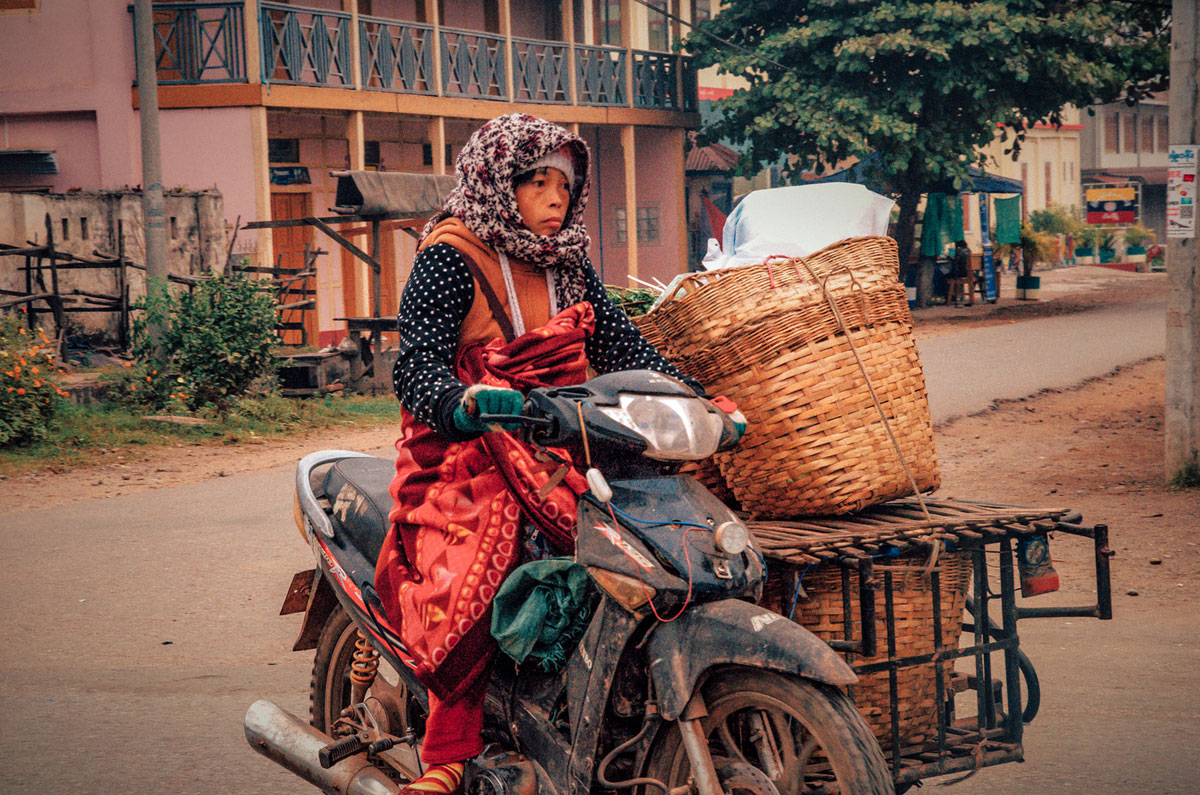
– a mother and her children on a motor bike
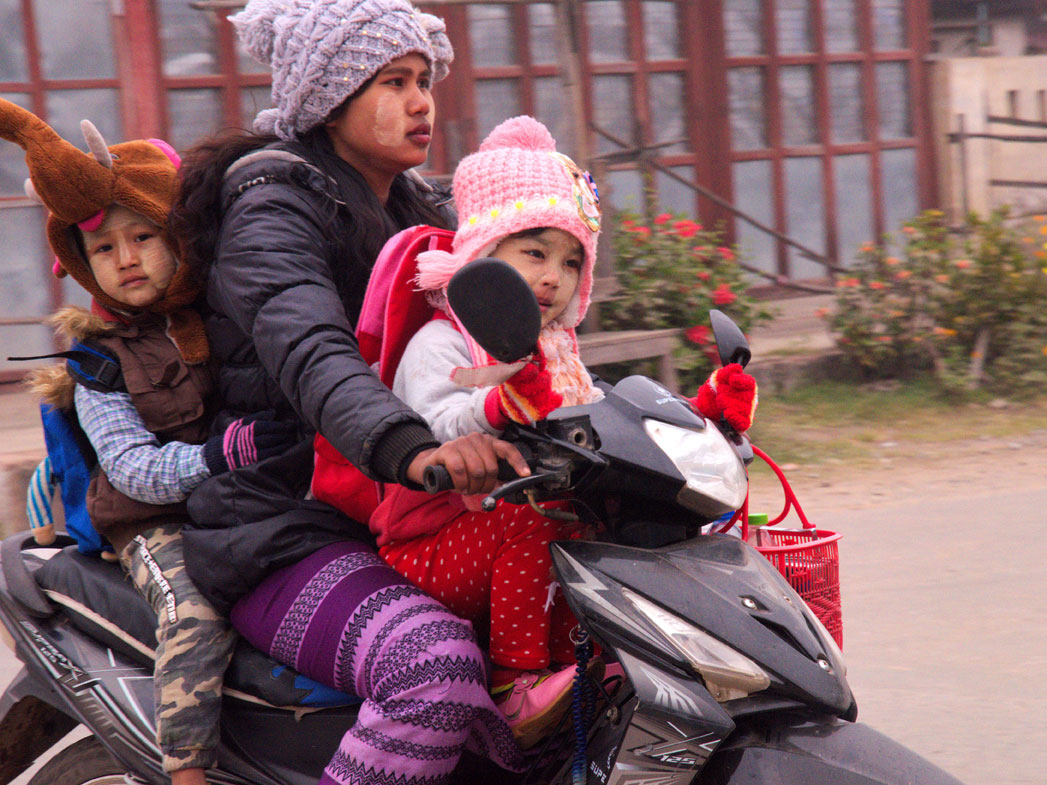
– a solitary monk walking down the road
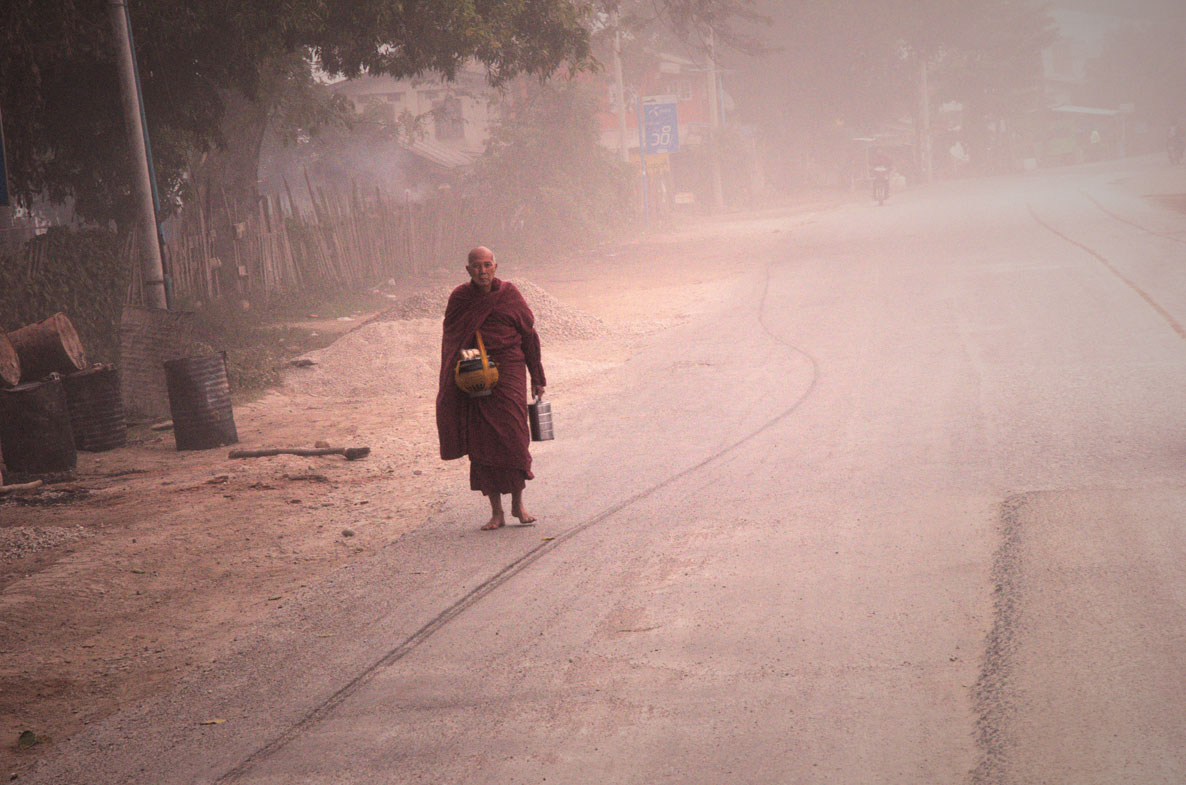
Shan Palace
Hsipaw had autonomy in local matters under the British colonial rule and initially in Burma (the country’s name at that time) which became independent in 1948. The Shan Palace is one of the few remaining mansions where the Shan princes or chieftains, called Sawbwas, resided. Also known as Hsipaw Haw, it was built in 1924 in a European style.
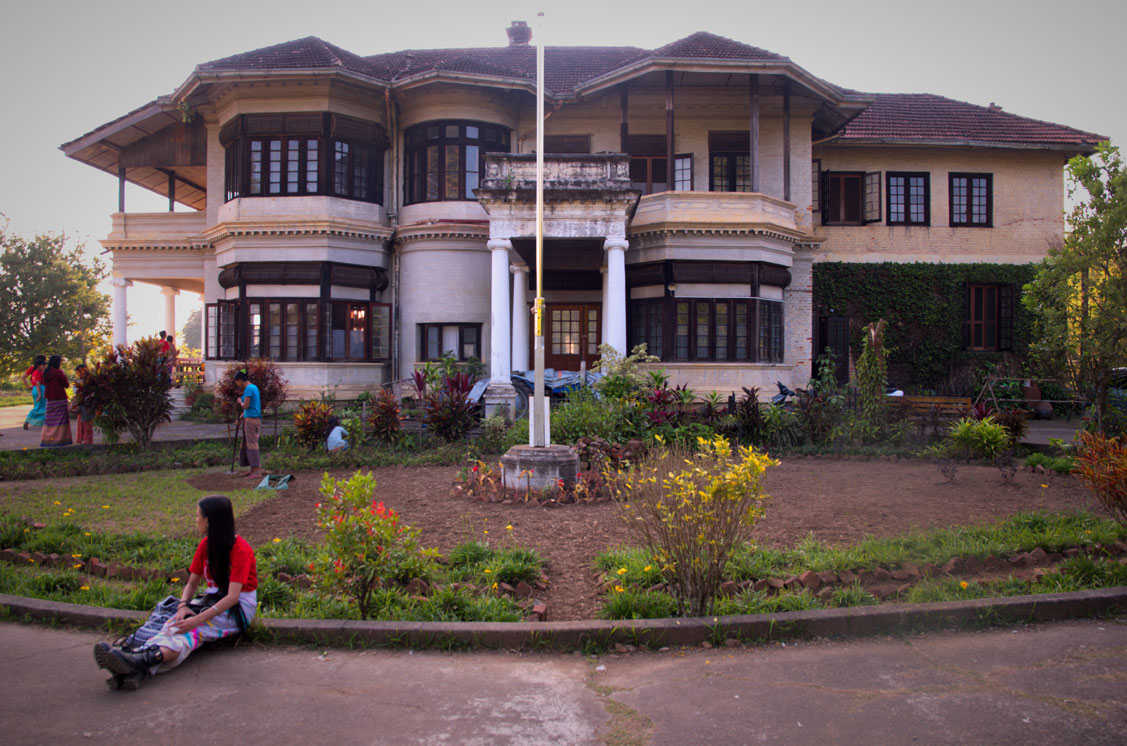
The last Prince, Saw Kya Seng, was married to Austrian-born Inge Eberhard. In 1951, of all places, they met in Colorado at a party for international students, even though they attended different colleges. They were attracted to each other and later married, although she didn’t know he was a prince until they relocated to Burma. Once there, she learned Burmese and became involved in numerous charitable activities. They were popular rulers and famous throughout the country. Seng disappeared during the 1962 military coup and Eberhard and her two daughters were placed under house arrest for two years. When she came to the conclusion that her husband had been killed in prison, she took her daughters and fled to Austria to stay with her parents. They eventually moved to Colorado where Eberhard became a German language teacher in the public school system. Under the encouragement of her new husband Ted Sargent, she wrote the poignant and romantic memoir “Twilight Over Burma: My Life as a Shan Princess”. The book became the Austrian film, “Twilight Over Burma”, in 2015, but was banned in both Myanmar and Thailand. She is still alive and living in Colorado.
Under the care of Sao Oo Kya, Seng’s nephew, the palace was open to tourist from 1996 to until 2005 when he was arrested for speaking out against the military. He has since been released. His wife Sao Sarm Hpong returned to the Shan Palace and opened it for tourism in 2012. On our visit, she related a history of the family and home, including when she said goodbye to Eberhard when she left the country for good.
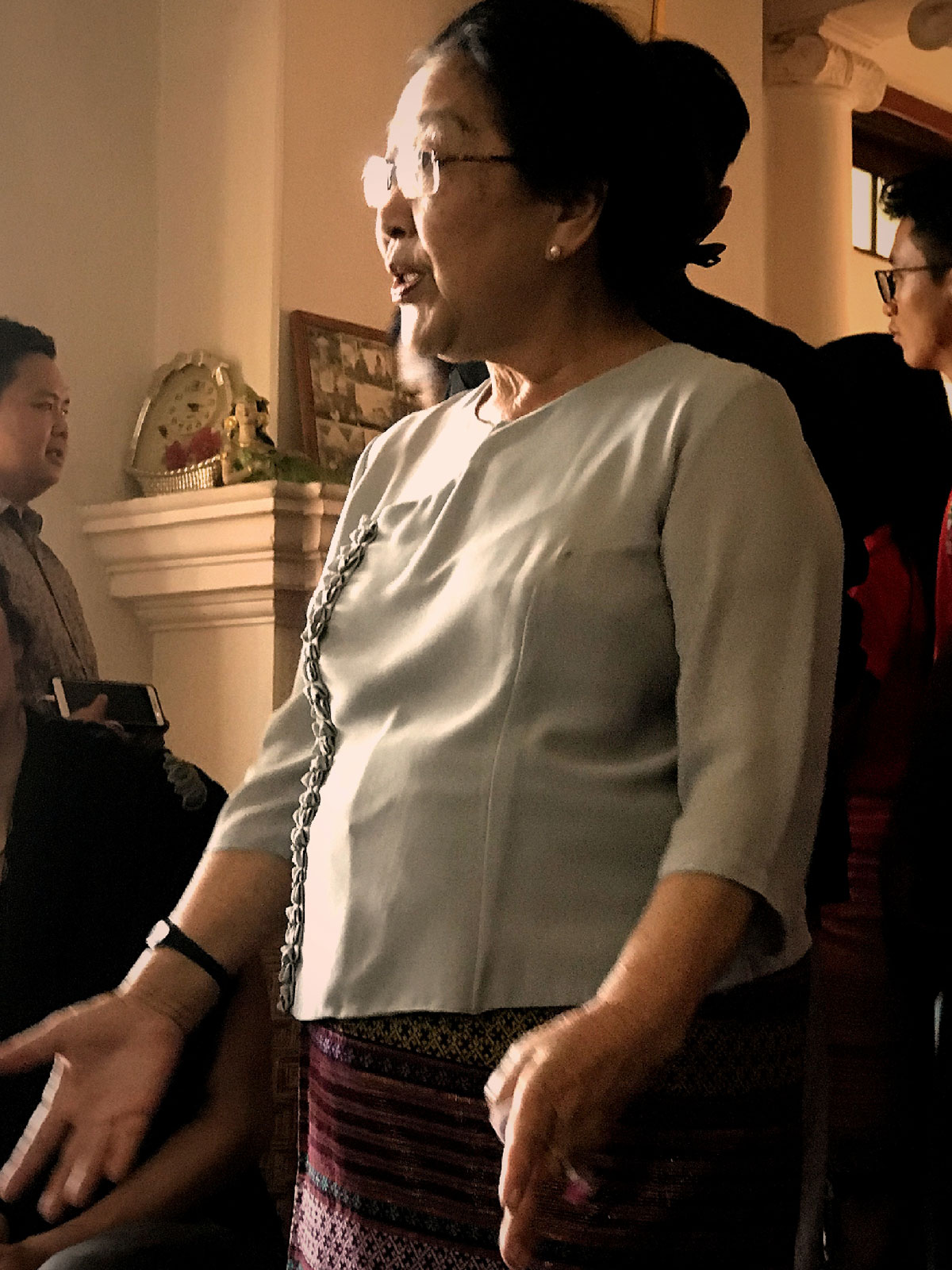
While walking to the Shan Palace, we passed through by a monastery and saw three novices playing outside.
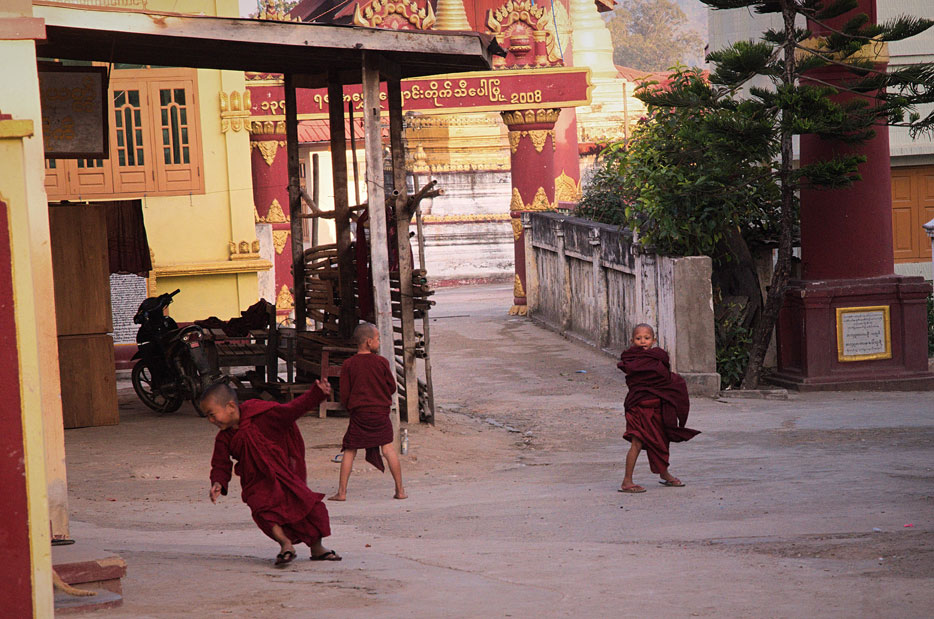
Little Bagan
West of the center of town, about a thirty-minute walk, is an area known as Little Bagan. There were decaying stupas scattered by the road to the Bamboo Buddha Monastery.
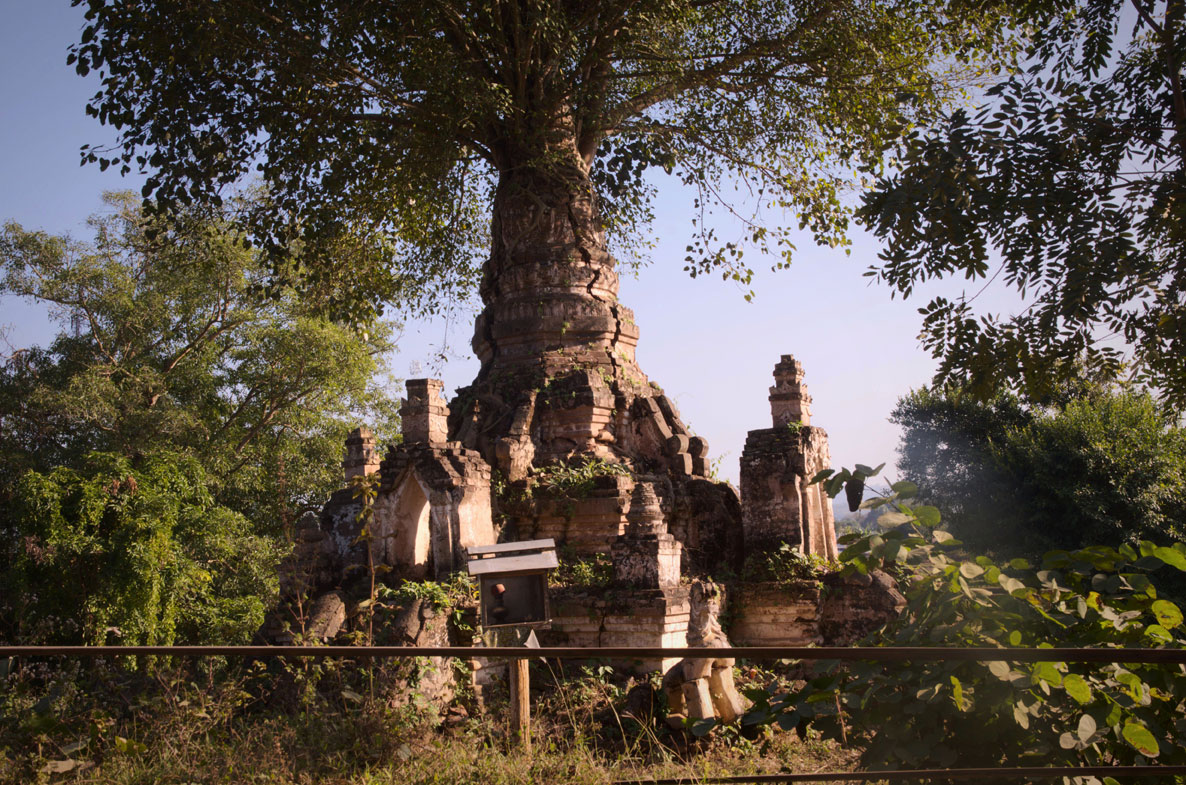
Subsequently, we went to Bagan and encountered thousands of religious structures. In comparison, even “little” is an exaggeration, but it was worth the walk to check them out. Nearby was Mrs. Popcorn restaurant which was a good stop for lunch or coffee. The menu includes meat dishes as well as vegetarian and vegan options in addition a wide array of juices. However they no longer serve popcorn.
Of course, everywhere we went in Myanmar, we met friendly people, such as these two young women.
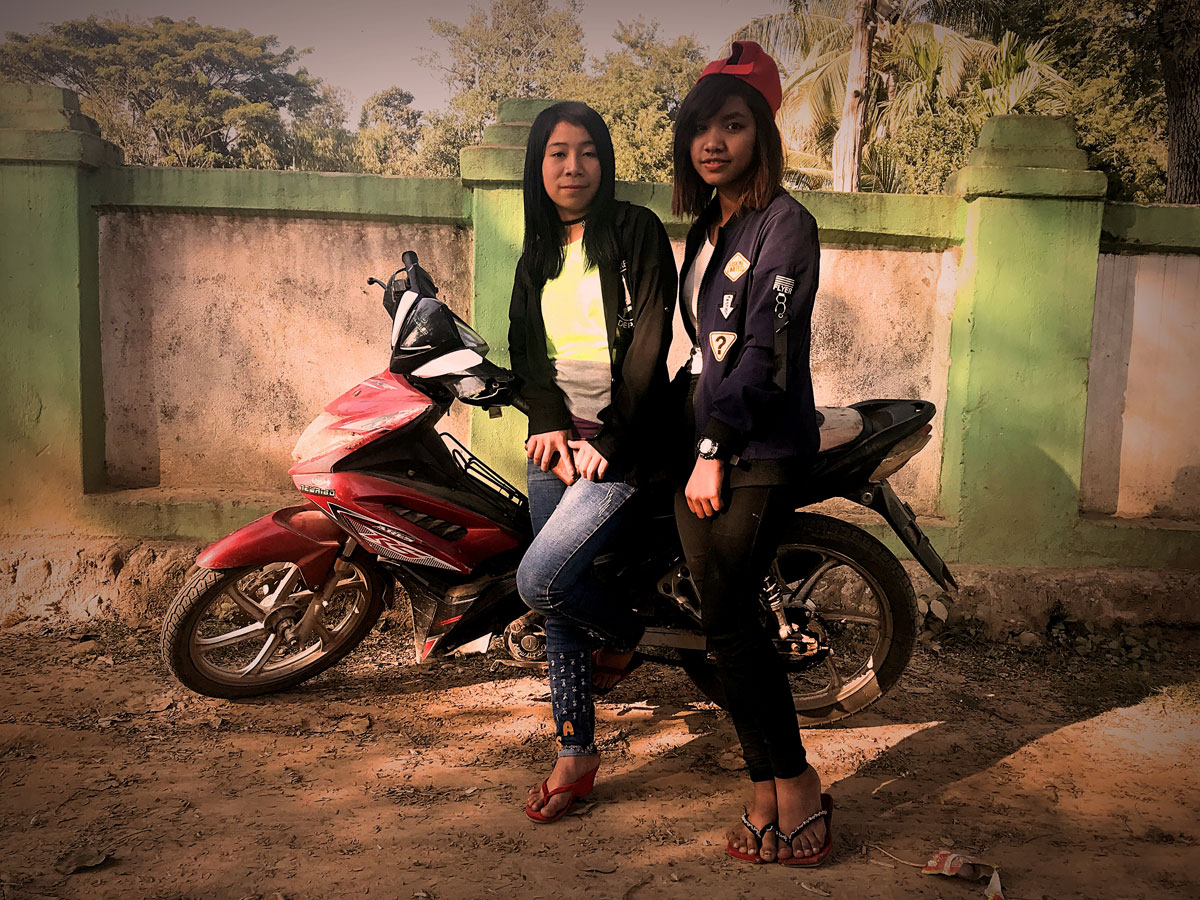
Central Town
Hsipaw seemed like the boondocks and had the feel of an old-western US frontier-town. We had a good time walking through it, as shown in this picture of Caitlin and Khadija.
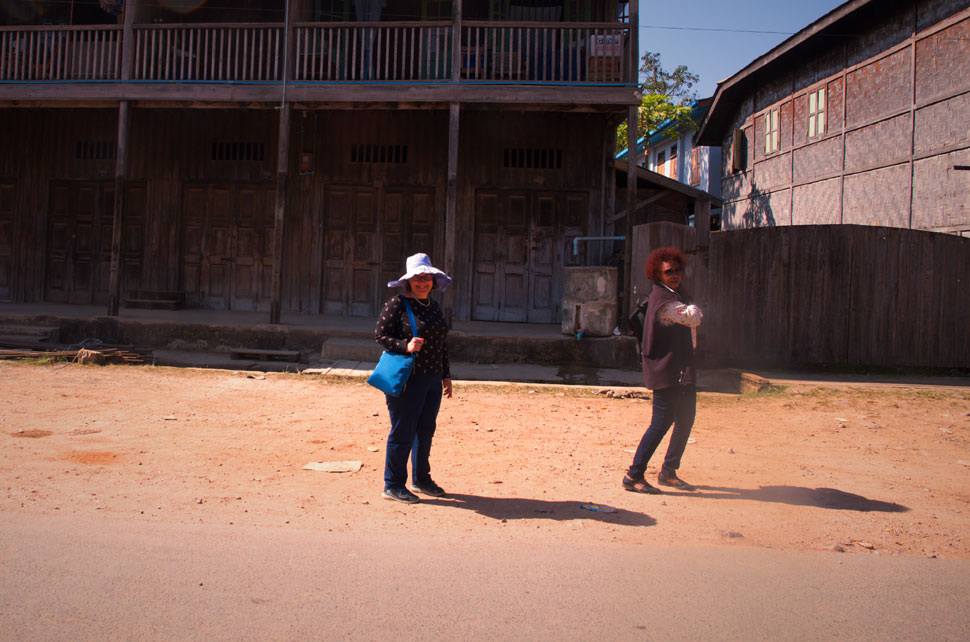
Of never-ending interest was watching the overloaded motor bikes.
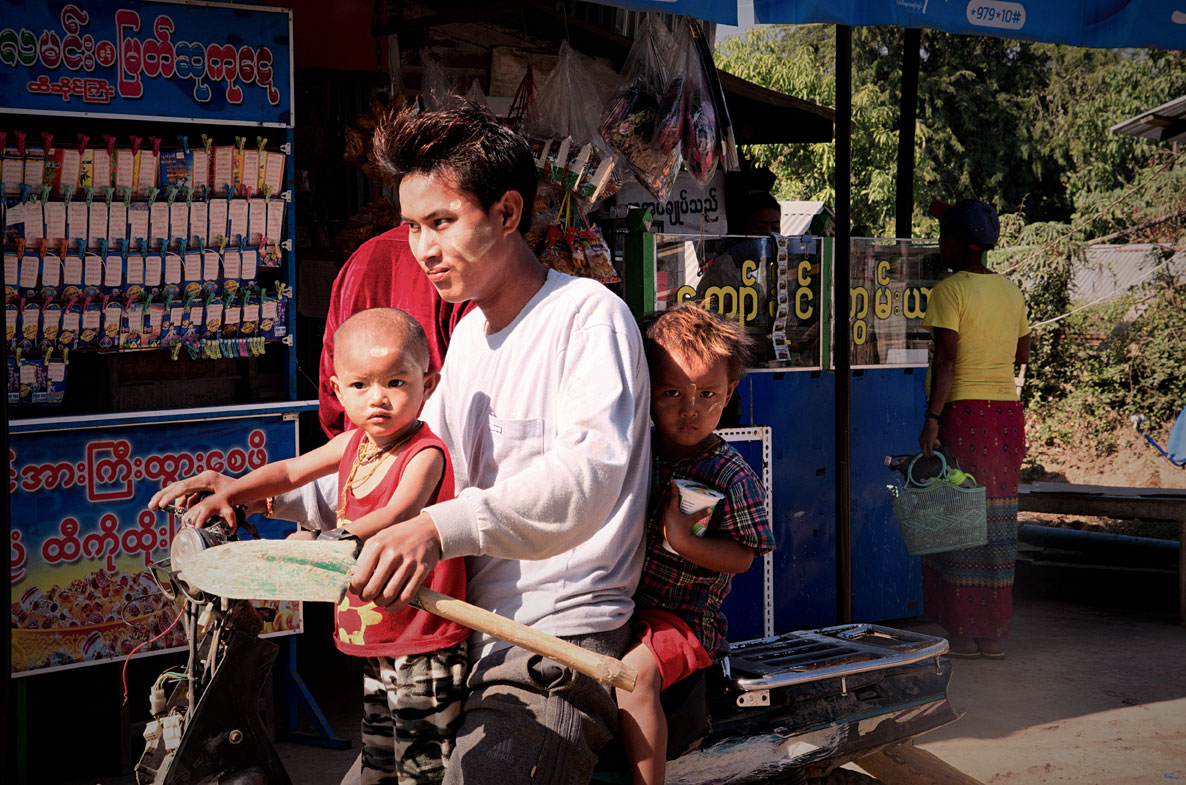
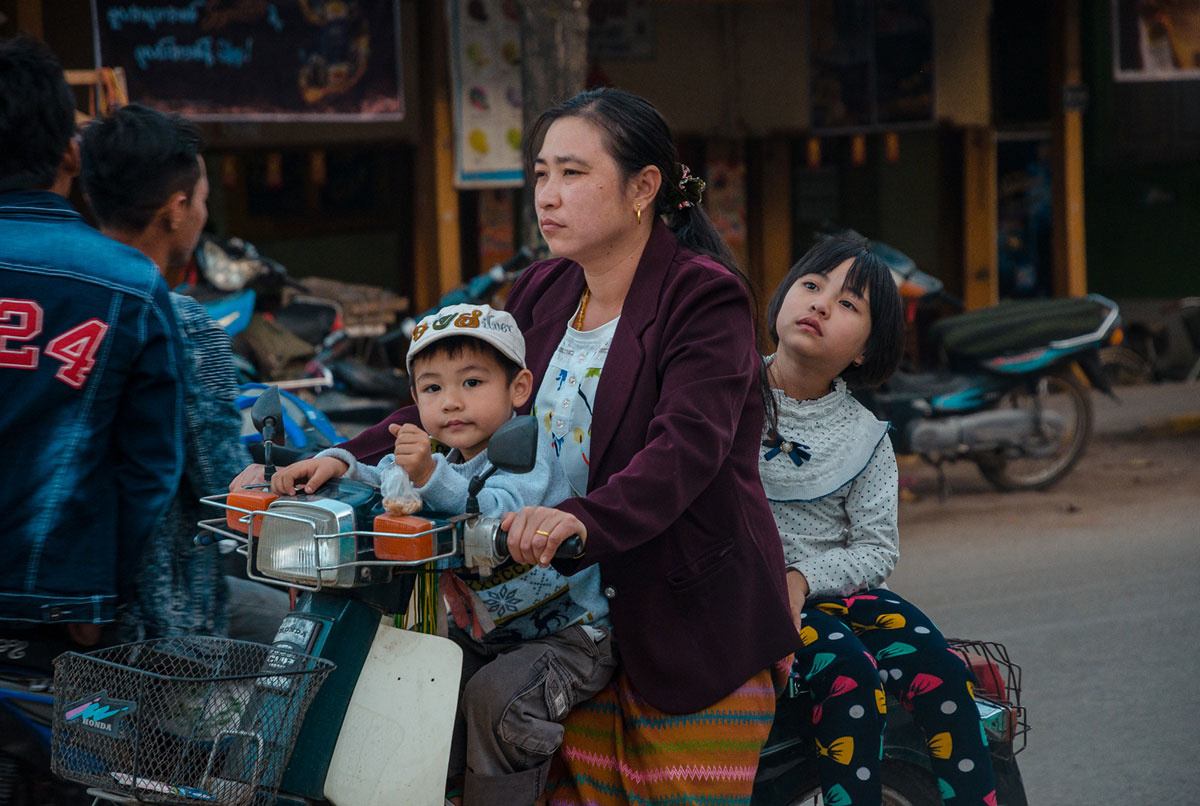
Peering into stores fronts also provided us with additional slices of life.
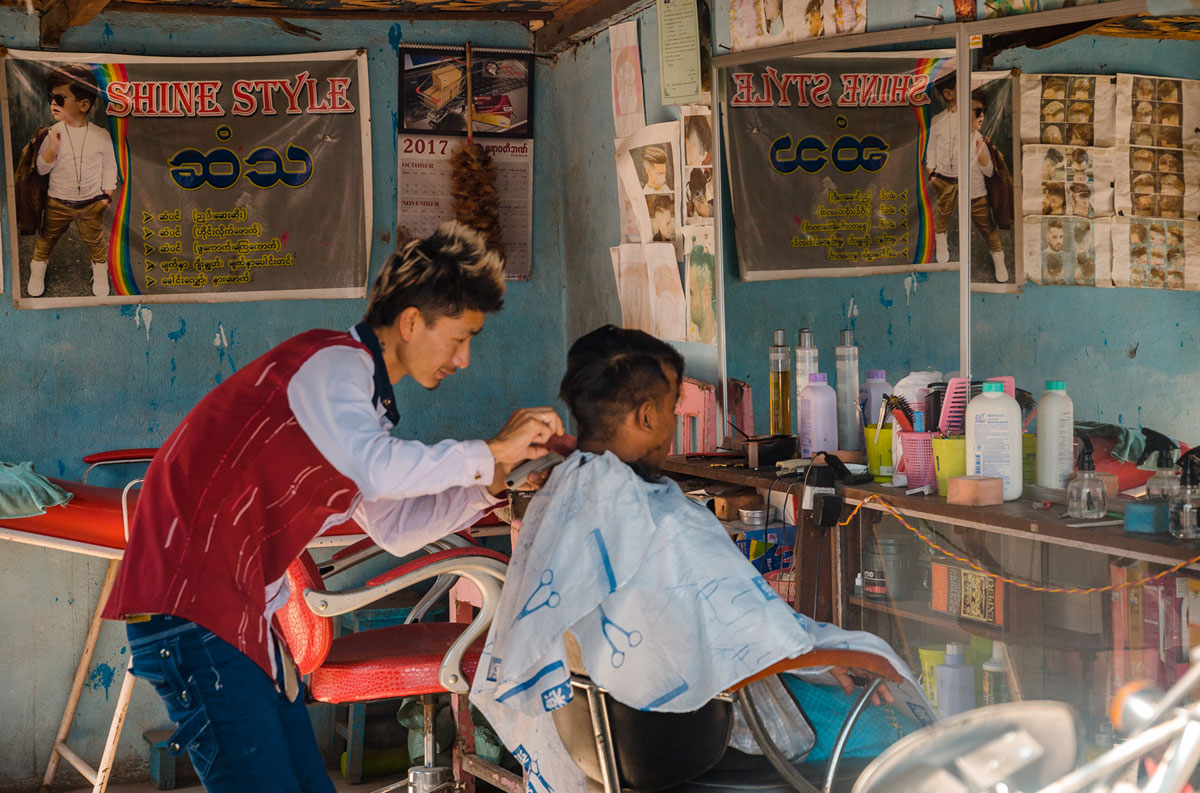
Go to Part 5 for our continued adventures in Myanmar where we trekked in the mountains near Hsipaw.

